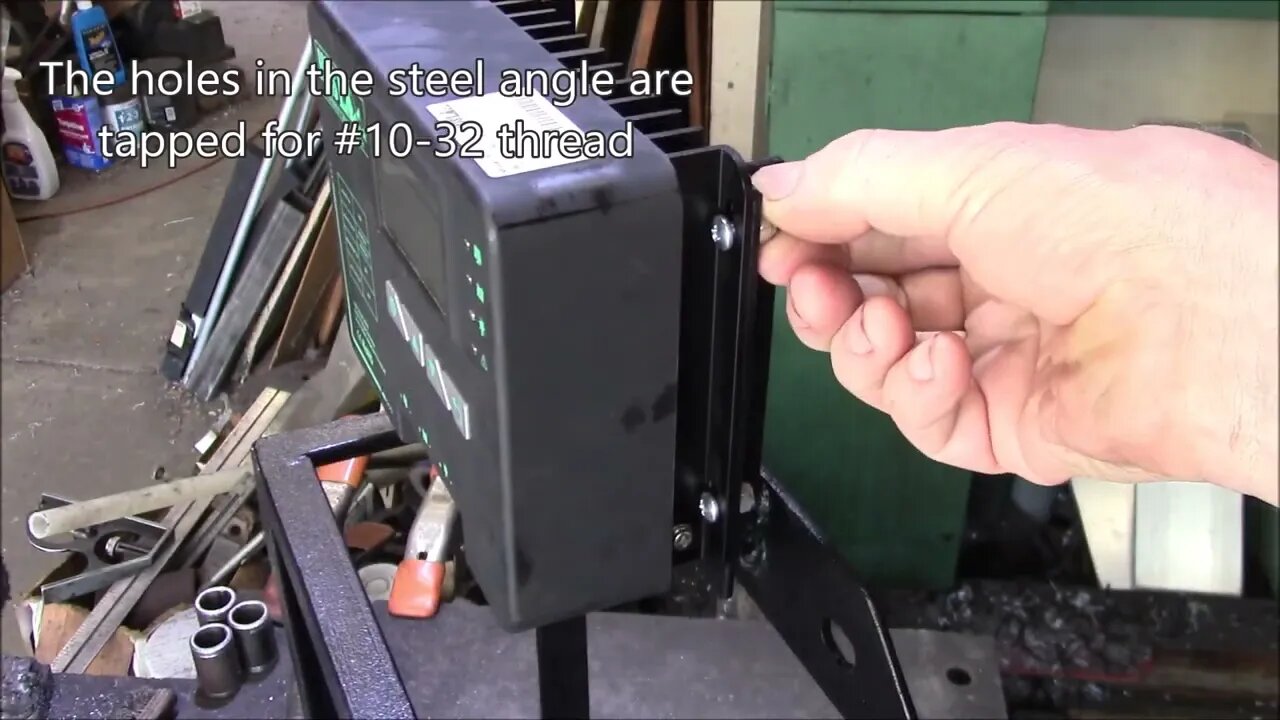Premium Only Content

House Battery and Solar for the 4Runner - Adding the Charge Controller
1st generation Toyota 4Runner, upgrading the power system in the rear of the truck with a 100AH LiFePO4 battery, 20 amp charge controller and 200W solar panel.
Building a cage to hold the 20 amp HQST charge controller above the battery up against the side of the bed in the 4Runner. You can see how tight this space is. The charge controller is supported by a pair of 3/4" steel angle (1/8" wall thickness) pieces with tapped holes for #10-32 machine screws and lock nuts.
All the pieces of angle were cut to fit around the battery with 45* cuts on the top and bottom trays and straight 90* cuts for the rest. I used some 1/8"x1" flat bar for the back bottom and sides (so the battery could slide in). The top was a piece of 1/8" x 2" flat bar. I cut clearance notches in that bar to allow the battery terminals to fit under as well as some notches on the upper angle to clear those terminals as well. You can find that sort off steel at most hardware stores or from a supplier like McMaster-Carr or Metal Supermarkets. This is similar to the cage I built to hold my dual batteries many years ago. I welded that cage up at my evening welding class.
This whole cage is designed to fit entirely on top of the wheel well and inside the opening in the factory roll bar. This will keep these components safely out of the way of things moving around in the bed while traversing bumpy 4WD trails and washboard roads. In the past, I used to bring my Harbor Freight jump start pack and always had trouble securing it in back. This new house battery will not be moving anywhere!
Why this charge controller? A few reasons, main one was the size, it fit in the space available. The other reasons were it had a decent feature set, MPPT, 20 amp rating to handle the 200W panel, Lithium and User charging profiles, built-in BlueTooth. HoboTech did a good review on these: https://youtu.be/HySgUYqjmo8?si=QcVw6jD4AhfpRae1
Why not use a commercial "solar generator"? Two main reasons, main one is that I couldn't find anything that would fit the space I had. Second reason was reliability, I have no experience with those systems but it seems that if one part goes out, the whole unit is dead. With the setup I've designed, if the LiFePO4 battery or BMS quits, I can reconfigure the charge controller to use the lead acid batteries. If the charge controller quits, I can use the alternator to charge the LiFePO4 battery. I'll run some tests later to determine if a DC-DC charger will be needed for this of it my high output Premier Power Welder alternator can handle this task. When I'm 100 miles from nowhere and something quits, I like to have options to work around the failed item.
List of parts used:
LiTime Mini 100AH battery:
https://www.litime.com/products/litime-12v-100ah-mini-lifepo4-lithium-battery-upgraded-100a-bms-max-1280wh-energy
https://amzn.to/3QmxcC5
HQST 20A MPPT Charge Controller
https://hqst.refr.cc/rogerb
https://amzn.to/3S5zhnf
200W AllPowers flexible solar panel:
https://amzn.to/46z7Eax
SAE Extension cable, used 3 ft. and 6 ft. cables:
https://amzn.to/46VnLix
SAE bulkhead connector:
https://amzn.to/3tuP7h1
8 circuit power distribution block:
https://amzn.to/45Ia9pL
#4Runner #softtop #lithiumbatteries #solarpanel #chargecontroller #LiTimestory
-
 10:23
10:23
TheSaltyCracker
15 hours agoMuslims Immediately Threaten New Yorkers After Zohran Win
20.4K392 -
 18:40
18:40
Actual Justice Warrior
15 hours agoMamdani Pledges To DESTROY New York
1.86K27 -
 28:53
28:53
iCkEdMeL
14 hours agoBREAKING: 9 DEAD After UPS Plane BURSTS Into Fireball at Louisville Airport
16.6K5 -
 20:52
20:52
Professor Nez
17 hours agoThe TRUTH is Actually WORSE than we Thought...
1.69K14 -
 8:59
8:59
MattMorseTV
16 hours ago $0.03 earnedTrump’s DIRE WARNING to the Senate GOP.
65.6K79 -
 2:13:33
2:13:33
Side Scrollers Podcast
19 hours agoAsmongold SUED for Emotional Distress + Hasan REJECTED+ INSANE Plane Crash + More | Side Scrollers
81K24 -
 21:39
21:39
Nikko Ortiz
4 days agoI Take A North Korean Shooting
74.2K10 -
 23:01
23:01
GritsGG
16 hours agoWarzone Solo Dubular! Last Night Time Solo???
7.81K -
 22:47
22:47
The Pascal Show
14 hours ago $0.02 earnedTHEY’RE HIDING EVIDENCE?! Candace Owens EXPOSES Foreign Connection In Charlie Kirk Shooting
16.3K22 -
 LIVE
LIVE
Lofi Girl
3 years agolofi hip hop radio 📚 - beats to relax/study to
270 watching